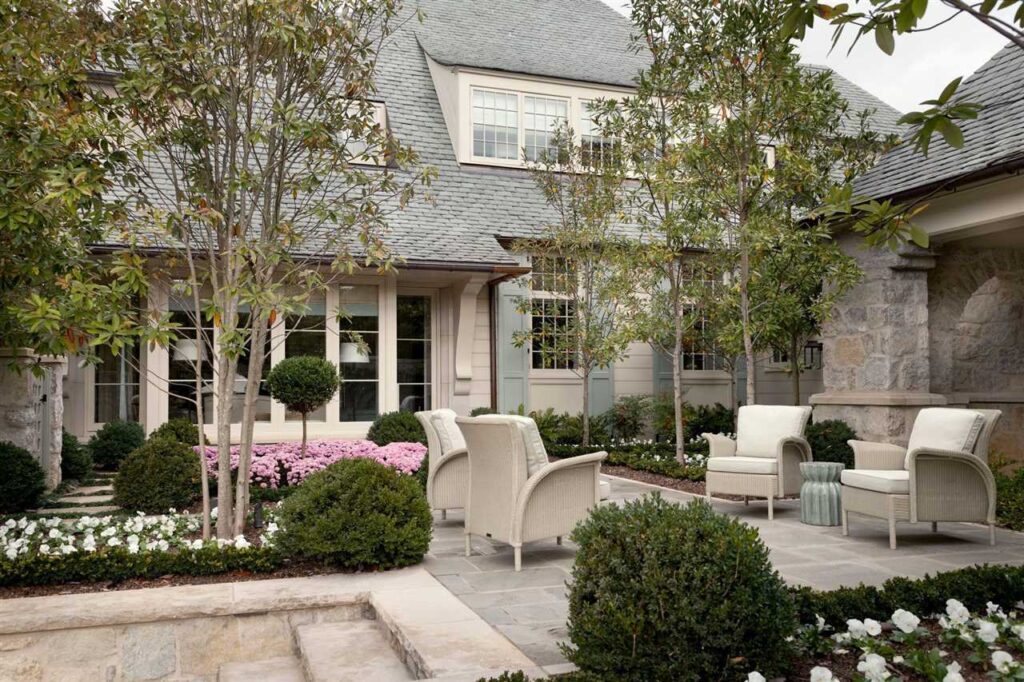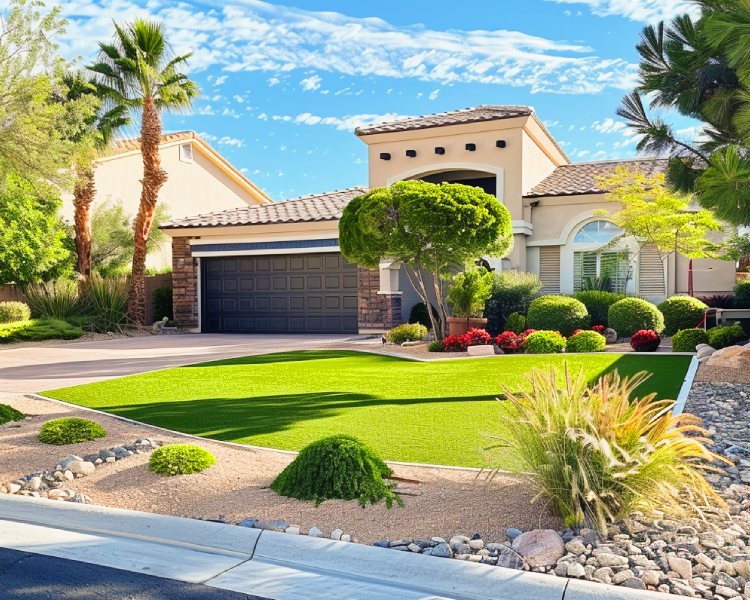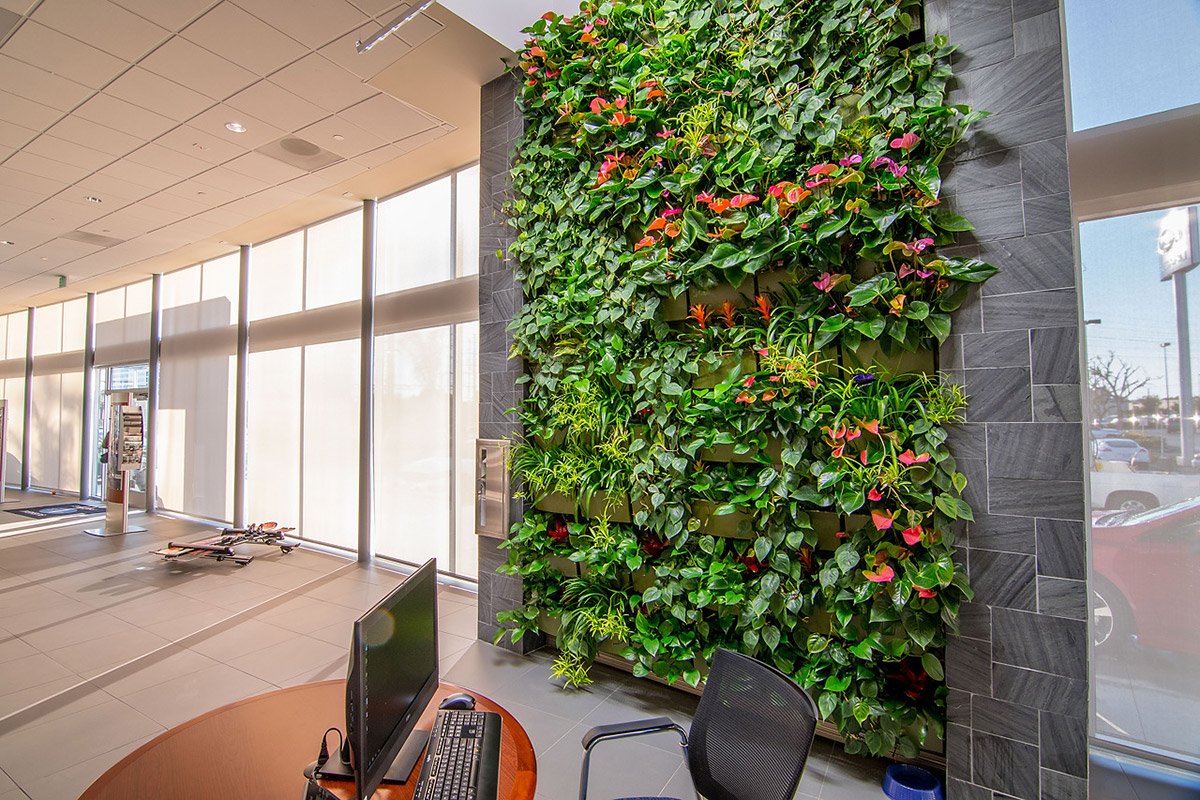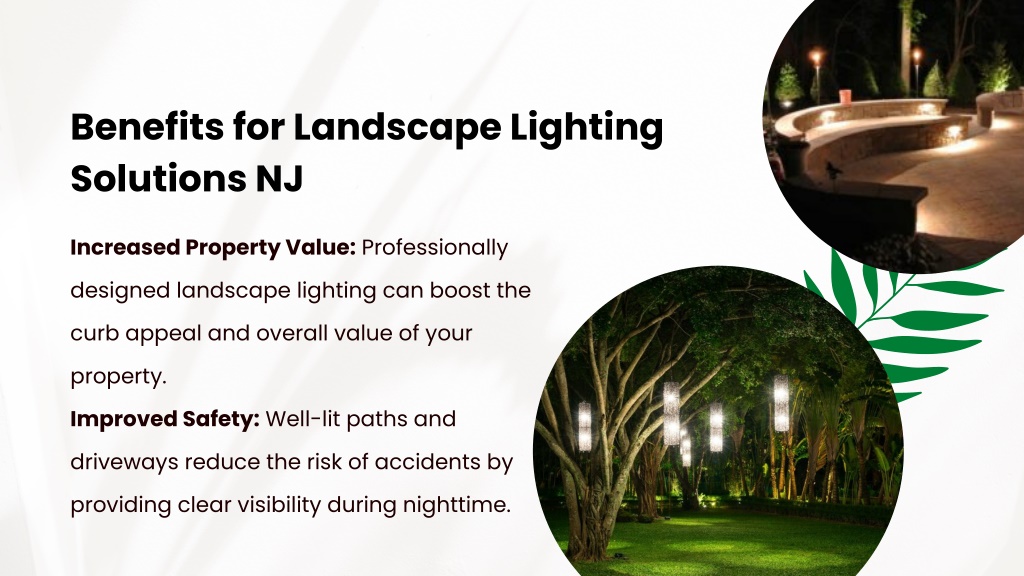
Crafting Your Personal Sanctuary: The Art of Tranquility Courtyard Design
In the relentless pace of modern life, finding moments of peace and serenity is not just a luxury, it’s a necessity. And what better place to cultivate this tranquility than in your own backyard? A well-designed courtyard can be your personal oasis, a space where you can escape the hustle and bustle of daily life and reconnect with nature and yourself. This comprehensive guide will walk you through the process of designing a tranquility courtyard, covering everything from the initial planning stages to the finishing touches that will transform your outdoor space into a haven of peace.
Understanding the Essence of a Tranquility Courtyard
Before diving into the specifics of design, it’s crucial to understand the core principles that define a tranquil space. A tranquility courtyard is more than just a pretty garden; it’s a carefully curated environment designed to soothe the senses and promote relaxation. This involves:
- A Sense of Enclosure: Creating a feeling of security and privacy is paramount. This can be achieved through walls, fences, hedges, or even strategically placed trees.
- Natural Elements: Incorporating elements of nature, such as plants, water features, and natural stone, is essential for fostering a connection with the outdoors.
- Simplicity and Minimalism: Avoiding clutter and embracing a minimalist aesthetic can help to reduce visual distractions and promote a sense of calm.
- Comfort and Functionality: The space should be comfortable and functional, providing areas for seating, relaxation, and perhaps even light activities like meditation or yoga.
- Sensory Stimulation: Engaging the senses through the use of textures, colors, sounds, and scents is key to creating a truly immersive experience.
Phase 1: Planning and Preparation – Laying the Foundation for Your Oasis
The design process begins with careful planning. This involves assessing your space, defining your goals, and creating a solid foundation for your project. This preliminary stage is critical for ensuring the long-term success and enjoyment of your tranquility courtyard.
1. Assessing Your Space: Understanding Your Environment
Before you start sketching designs, take a thorough look at your existing space. Consider the following factors:
- Size and Shape: Measure the dimensions of your courtyard to determine the available space. Note the shape, as this will influence the layout of your design.
- Sunlight and Shade: Observe the amount of sunlight your courtyard receives throughout the day. This will dictate the types of plants you can grow and the best locations for seating areas.
- prevailing Winds: Consider wind patterns, which can affect the comfort of your courtyard and the types of plants that thrive there.
- Existing Features: Take note of any existing features, such as trees, structures, or utilities. These features can be incorporated into your design or worked around.
- Soil Conditions: Assess the soil type and drainage. This will be crucial for plant selection and overall plant health. You may need to amend the soil or install drainage systems.
2. Defining Your Goals: What Do You Want to Achieve?
Think about how you want to use your courtyard. What activities do you envision taking place there? Do you want a space for:
- Relaxation and Meditation? If so, prioritize comfortable seating, quiet areas, and elements that promote mindfulness.
- Entertaining Guests? Consider adding a dining area, outdoor kitchen, and space for social gatherings.
- Gardening? Dedicate space for planting beds, containers, and possibly a small greenhouse.
- A Combination of Uses? You can create a versatile space that accommodates multiple activities.
Write down your goals to guide your design decisions. This will help you stay focused and make choices that align with your vision.
3. Budgeting and Resource Allocation: Setting Financial Boundaries
Determine your budget before you start planning. This will help you make realistic choices about materials, plants, and labor. Consider the following costs:
- Materials: Paving stones, decking, fencing, water features, furniture, plants, and decorative elements.
- Labor: If you are hiring professionals for construction, landscaping, or installation.
- Tools and Equipment: If you plan to do the work yourself, factor in the cost of tools and equipment.
- Ongoing Maintenance: Budget for regular maintenance, such as pruning, watering, and seasonal upkeep.
Once you have a budget, allocate resources accordingly. Prioritize essential elements and consider phasing the project if necessary. Doing things in stages can make the whole project feel less overwhelming.
Phase 2: Design and Layout – Bringing Your Vision to Life
With your planning complete, it’s time to start designing your courtyard. This involves creating a layout that meets your needs, incorporates the desired elements, and promotes a sense of tranquility.
1. Creating a Layout: Zoning Your Space
Divide your courtyard into zones based on their intended use. This will help you organize the space and create a logical flow. Consider these zones:
- Seating Area: Where you’ll relax, read, or socialize.
- Dining Area: If you plan to eat meals outdoors.
- Gardening Area: For planting and tending to plants.
- Water Feature Area: If you’re incorporating a pond, fountain, or other water element.
- Pathways: To connect different areas of the courtyard.
Use a sketch or a digital design tool to visualize your layout. Experiment with different arrangements until you find one that feels comfortable and functional.
2. Choosing Materials: Textures and Aesthetics
The materials you choose will significantly impact the overall look and feel of your courtyard. Consider these options:
- Paving: Options include natural stone (such as flagstone or slate), concrete pavers, brick, and gravel. Choose materials that complement the style of your home and provide a comfortable walking surface.
- Walls and Fences: Create a sense of enclosure with walls, fences, or hedges. Materials include wood, brick, stone, or a combination.
- Decking: If you’re building a deck, choose a durable and weather-resistant material like wood, composite decking, or tile.
- Furniture: Select comfortable and stylish furniture that is suitable for outdoor use. Consider materials like wicker, metal, or teak.
- Decorative Elements: Add personality and visual interest with decorative elements like sculptures, planters, and lighting.
Pay attention to the textures and colors of your materials. Combine natural elements with man-made materials to create a harmonious balance.
3. Incorporating Key Elements: The Building Blocks of Tranquility
Several key elements contribute to the tranquility of a courtyard:
- Water Features: The gentle sound of water can be incredibly soothing. Consider a small fountain, a pond, or a bubbling rock feature.
- Plants: Choose plants that appeal to your senses. Incorporate a variety of textures, colors, and scents. Consider fragrant flowers, lush foliage, and plants that attract wildlife.
- Lighting: Use lighting to create a warm and inviting atmosphere. Consider ambient lighting, task lighting, and accent lighting.
- Seating: Provide comfortable seating options for relaxation and socializing.
- Privacy: Use walls, fences, hedges, or strategically placed trees to create a sense of privacy and seclusion.
Phase 3: Planting and Landscaping – Cultivating Your Green Haven
The plants you choose are crucial to the overall aesthetic and atmosphere of your tranquility courtyard. Careful plant selection can transform your space into a lush and inviting haven.
1. Plant Selection: Choosing the Right Plants for Your Space
Consider the following factors when selecting plants:
- Climate and Microclimate: Choose plants that are well-suited to your climate and the specific conditions of your courtyard (sun, shade, wind).
- Sunlight and Shade: Select plants that thrive in the amount of sunlight your courtyard receives.
- Soil Conditions: Choose plants that are adapted to your soil type and drainage.
- Water Requirements: Consider the water needs of your plants and choose drought-tolerant options if water conservation is a concern.
- Aesthetic Preferences: Select plants that appeal to your personal taste. Consider the color, texture, and form of the plants.
- Fragrance and Sound: Incorporate fragrant flowers and plants that rustle in the breeze to engage your senses.
Some excellent choices for a tranquility courtyard include:
- Japanese Maples: For their beautiful foliage and graceful form.
- Bamboo: For its privacy screening and calming rustling sound.
- Lavender: For its fragrant flowers and calming scent.
- Ferns: For their lush foliage and ability to thrive in shady areas.
- Roses: For their beautiful blooms and sweet fragrance.
2. Planting Design: Creating a Harmonious Arrangement
Once you’ve chosen your plants, plan their arrangement. Consider these principles:
- Layering: Create depth and visual interest by layering plants of different heights and textures.
- Color Palette: Choose a color palette that complements your overall design. Consider using a monochromatic scheme or a combination of complementary colors.
- Focal Points: Create focal points to draw the eye and add visual interest. This could be a striking tree, a beautiful sculpture, or a vibrant flower bed.
- Grouping: Group plants together for a more natural and cohesive look.
- Spacing: Allow enough space for plants to grow and mature.
Consider using a planting plan to visualize your design before you start planting. This will help you to avoid mistakes and ensure a harmonious arrangement.
3. Ongoing Maintenance: Keeping Your Oasis Thriving
Regular maintenance is essential for keeping your courtyard looking its best. This includes:
- Watering: Water plants regularly, especially during dry periods.
- Pruning: Prune plants to maintain their shape and health.
- Fertilizing: Fertilize plants to provide them with nutrients.
- Weeding: Remove weeds regularly to prevent them from competing with your plants.
- Mulching: Apply mulch to help retain moisture, suppress weeds, and improve soil health.
- Seasonal Care: Adjust your maintenance routine to accommodate seasonal changes.
By following these maintenance tips, you can ensure that your tranquility courtyard remains a beautiful and inviting space for years to come.
Phase 4: Adding the Finishing Touches – Elevating the Experience
Once the structural elements and landscaping are in place, it’s time to add the finishing touches that will truly elevate the experience of your tranquility courtyard. These details are what will transform your space from functional to fabulous.
1. Furniture and Accessories: Comfort and Style
Choose furniture that is comfortable, stylish, and appropriate for outdoor use. Consider:
- Seating: Provide comfortable seating options such as chairs, benches, sofas, or even a hammock.
- Tables: Add tables for dining, drinks, or simply for placing decor.
- Cushions and Throws: Enhance the comfort of your seating with cushions and throws.
- Outdoor Rugs: Define seating areas and add warmth and texture with outdoor rugs.
Select accessories that complement your design and add personality to your space. Consider:
- Planters and Pots: Use planters and pots to add greenery and color to your courtyard.
- Sculptures and Art: Incorporate sculptures, artwork, or other decorative elements to add visual interest.
- Lighting Fixtures: Use lighting fixtures to create a warm and inviting atmosphere.
2. Lighting Design: Setting the Mood
Lighting plays a crucial role in setting the mood and ambiance of your courtyard. Consider these lighting options:
- Ambient Lighting: Provides general illumination for the entire space. Examples include overhead lights, string lights, and lanterns.
- Task Lighting: Provides focused light for specific activities, such as reading or dining. Examples include spotlights and table lamps.
- Accent Lighting: Highlights specific features, such as plants, sculptures, or architectural details. Examples include spotlights and up lights.
- Solar Lighting: A sustainable and energy-efficient option for outdoor lighting.
Layer your lighting to create a dynamic and inviting atmosphere. Use a combination of ambient, task, and accent lighting to achieve the desired effect.
3. Sensory Enhancements: Engaging the Senses
Engage your senses to create a truly immersive and tranquil experience. Consider these enhancements:
- Water Features: The sound of running water can be incredibly soothing.
- Fragrant Plants: Plant fragrant flowers and herbs, such as lavender, jasmine, and mint.
- Wind Chimes: The gentle sound of wind chimes can create a calming atmosphere.
- Outdoor Music: Play soft music to enhance the mood.
- Comfortable Textures: Use soft cushions, throws, and rugs to create a comfortable and inviting space.
Maintaining Your Tranquility Courtyard: A Long-Term Commitment
Creating a tranquility courtyard is a worthwhile endeavor, but it’s not a one-time project. It requires ongoing maintenance to keep it looking its best and ensure it remains a haven of peace.
1. Regular Upkeep: Keeping Things Tidy
Regular upkeep is essential for maintaining the beauty and functionality of your courtyard. This includes:
- Cleaning: Sweep or hose down paving stones, decks, and other surfaces regularly.
- Pruning: Prune plants as needed to maintain their shape and health.
- Weeding: Remove weeds regularly to prevent them from taking over.
- Cleaning Water Features: Clean and maintain your water features to prevent algae buildup.
- Inspecting and Repairing: Inspect your furniture, lighting, and other features regularly for damage and make necessary repairs.
2. Seasonal Adjustments: Adapting to the Seasons
Make seasonal adjustments to your courtyard to ensure it remains comfortable and enjoyable throughout the year:
- Spring: Prepare your garden for the growing season by pruning, fertilizing, and planting new plants.
- Summer: Provide shade and protection from the sun by adding umbrellas, awnings, or shade sails. Water plants regularly and maintain your lawn.
- Fall: Prepare your garden for winter by pruning, mulching, and protecting tender plants.
- Winter: Protect plants from frost and snow. Store outdoor furniture and accessories indoors.
3. Long-Term Planning: Evolving Your Oasis
Your tranquility courtyard should evolve with your needs and preferences. Regularly assess your space and make adjustments as needed. Consider:
- Adding New Plants: Introduce new plants to add variety and interest.
- Changing Your Furniture: Update your furniture to reflect your changing tastes.
- Adding New Features: Consider adding new features, such as a fire pit or an outdoor kitchen, to enhance your enjoyment of the space.
- Seeking Professional Help: Don’t hesitate to seek help from a landscape designer or other professionals if you need assistance with maintenance or upgrades.
Conclusion: Embracing the Serenity of Your Tranquility Courtyard
Designing a tranquility courtyard is a rewarding journey that allows you to create a personal sanctuary where you can escape the stresses of daily life and reconnect with nature. By following the steps outlined in this guide, you can transform your outdoor space into a haven of peace and serenity. Remember to embrace the process, enjoy the journey, and allow your courtyard to evolve with your needs and preferences. With careful planning, thoughtful design, and ongoing maintenance, your tranquility courtyard will become a cherished space where you can relax, rejuvenate, and find inner peace for years to come.



